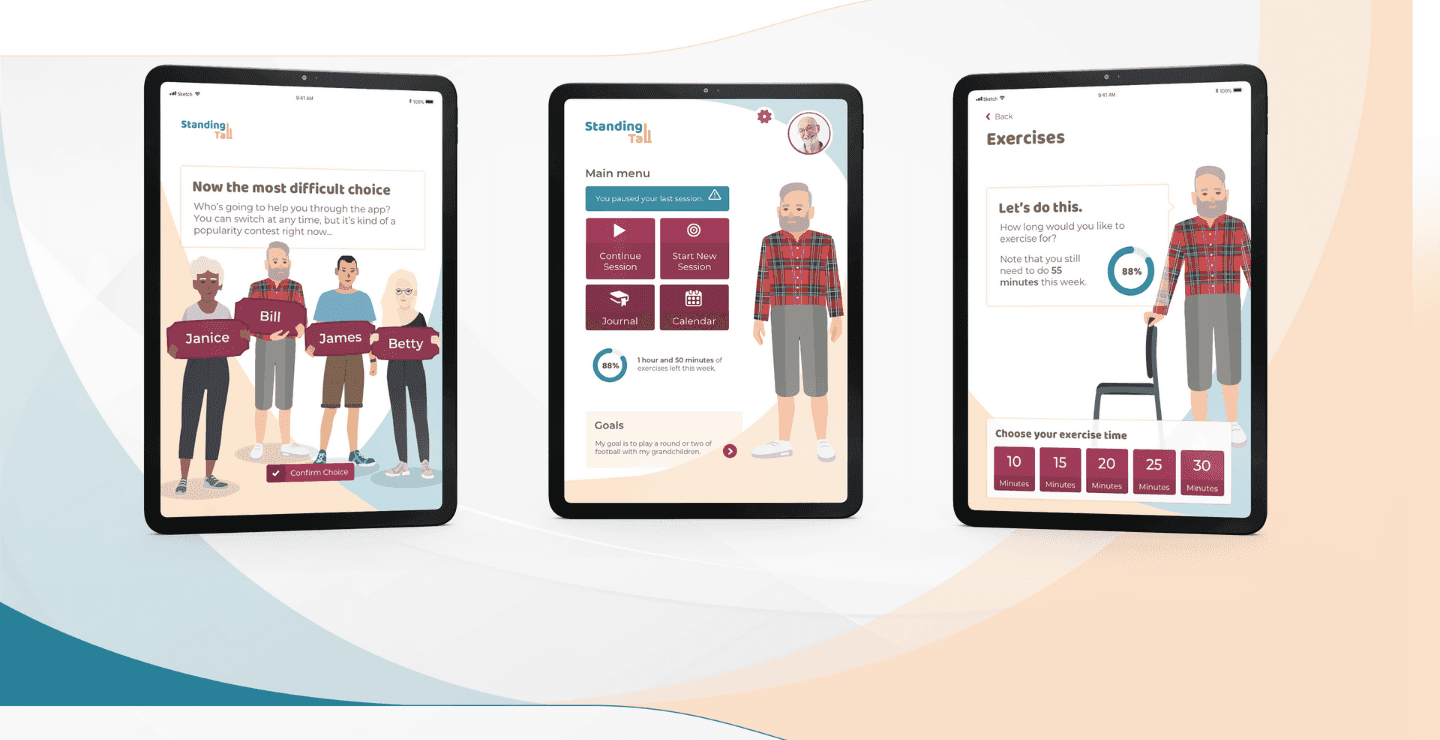Focus on Standing Tall Falls prevention in Australia
Client
categories
interview
13 Oct 2023
Kim Delbaere, Senior Principal Research Scientist and Director of Innovation & Translation at Neuroscience Research Australia’s Falls, Balance and Injury Research Centre said, "The first meeting with the MPF team immediately illustrated their depth of knowledge and expertise in the area of lifestyle apps. They kept our older users at the front of their minds when making decisions around service design and approach, resulting in a product that we are very proud of. They have impressed us every step of the way! Read more about Kim and her project below.
Tell us a bit more about your background.
I am a Senior Principal Research Scientist and Director of Innovation & Translation at the Falls, Balance & Injury Research Centre at Neuroscience Research Australia (NeuRA), and conjoint Professor with the UNSW School of Population Health. I studied Physiotherapy and Rehabilitation Science in Belgium at the University of Ghent, before starting a PhD in falls prevention in 2001.
How did your journey around falls prevention occur?
When I started my PhD, I was mostly interested in understanding concerns about falling in older people, and how it impacts behaviour and fall risk. Concerns about falling are more common than falls itself, and have been associated with various negative outcomes, including depression, decreased quality-of-life and social isolation. A related avoidance of daily life activities can then result into a negative spiral through physical deconditioning. Physical activity – and more specifically balance exercises – are the single most important aspect of fall prevention. My interest in the interrelationship between body and mind is what led me to come to NeuRA in 2006.
Introduce your digital product how does it support your research
One in three people aged over 65 years fall each year and a quarter of these falls result in serious injury. Falls can lead to a loss of independence, social isolation, depression, and a significant reduction in quality of life. However, many falls are preventable. In fact, falls in older people are the largest addressable and preventable injury-related cost in health today. Research from our group and others has shown that exercise is the single most effective strategy to prevent falls. Exercise programs are often delivered in group classes. Yet, in many cases, in-person falls prevention programs are not possible or viable.
At NeuRA, we developed StandingTall to address this problem. StandingTall is a digital fall prevention solution that is globally recognised as the only digital fall prevention solution irrefutably proven to deliver a 20% reduction of injuries from falls over a period of 2 years. It delivers an easy to use, tailored and progressive exercise program that older people can do at home by themselves choosing their goal and time and duration of the session. The app features a detailed inbuilt assessment which designs a personalised program from a library of several 1000s exercise variations including balance, strength, mobility, cardio, stepping and congruent cognitive challenges, matching the specific needs and abilities of each user.
What is the biggest challenge you’ve overcome in regards to building a digital product
We have developed StandingTall as a research product, fit for clinical trial research in the community-living older people and in clinical populations. The hardest part has been to take it out of the research setting and develop StandingTall for mass-market release, compliant with all relevant global integrations and standards.
What is the biggest exciting change you can see in falls prevention atm
The Royal Commission into Aged Care indicated that many older Australians are not receiving the allied health support they need to remain safe at home due to access, funding and workforce issues. In addition, the report highlighted the need to implement digital health in aged care, especially in regional and rural Australia to ensure that older people have access to appropriate and effective care, most preferably in their own homes. It is very exciting to see that digital services and technologies will be funded under the new Support at Home program for aged care that will be implemented across Australia in 2023.
What is the biggest preconception around research and science study you think you can address?
StandingTall has a strong potential to drive the digital transformation of health care as recommended in the recent Royal Commission into Aged Care Report. The delivery of fall prevention via e-Health while fostering self-management of health in our growing ageing population, will increase capacity within the home care workforce and support the sustainability of home care for older people.
We are cognisant of the need to design a solution that overcomes potential cognitive limitations and fears around using technology in this cohort. However, after successfully guiding over 1500 older people to use StandingTall for up to 2 years, we feel absolutely confident that the time is right to offer technology-driven programs as an engaging, home-based substitute to improve health in older people.
What’s next for your project?
We will work with aged care providers to ensure that StandingTall has all required functionalities to make it fit-for-purpose for all older Australians across all relevant health settings.
